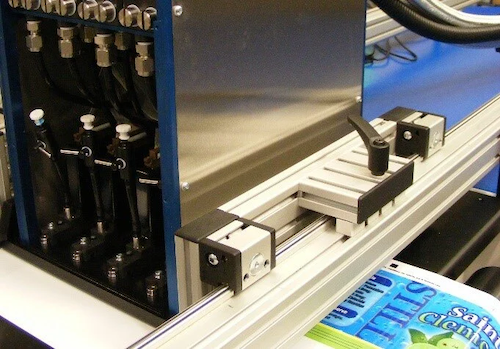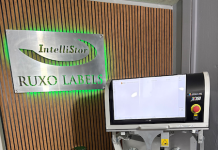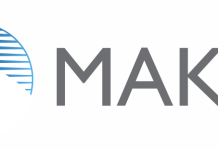According to Focus Label Machinery, excess materials, ink, and energy consumption drive up expenses and contribute to rising levels of pollution. Waste in label printing operations is problematic as it increases costs, depletes resources and impacts the environment at a time when many companies are striving for sustainability.
Therefore, the efficient use of resources and waste reduction are essential for sustainability and profitability in the printing industry.
Optimise Print Layouts
One of the most effective ways to reduce waste is to optimise print layouts. By strategically arranging labels on the printing substrate, businesses can maximise the use of the available space and minimise material wastage. Advanced software solutions can assist in creating efficient layouts, ensuring that labels are positioned to make the best use of the material, thereby reducing the number of unusable offcuts. Regularly reviewing and adjusting layouts based on job requirements can, over time, lead to significant reductions in waste.
Invest In Digital Printing Technology
Traditional printing methods, such as flexography or offset printing, often produce significant amounts of waste due to setup processes and material handling. They are not best suited to small volume orders. Digital printing, on the other hand, offers a more precise and efficient alternative. Digital printing equipment can produce short runs without the need for extensive setup, leading to less waste. Additionally, digital printing allows for on-demand production, reducing the need for large inventories and the associated waste from unused labels. Tiny adjustments can be made to designs and viewed on screen, without the need for test runs. CMYK digital printing reduces the need to mix special colours and overcome the problem of excess ink that needs to be disposed of.
Implement Robust Quality Control
Quality control plays an essential role in minimising waste. Defective labels can lead to significant material loss if not identified early. Implementing a robust quality control process helps errors to be spotted before they escalate. This includes regular maintenance of printing equipment, thorough inspection of printed labels, and ongoing training for staff to recognise and address potential issues. Using automated inspection systems can also enhance accuracy and speed in detecting defects, thereby reducing waste.
Use Eco-Friendly Materials
Switching to eco-friendly materials can significantly impact waste reduction. Biodegradable or recyclable substrates and inks can minimise environmental impact, and often offer better recycling options to ensure that waste generated during the printing process can be repurposed or responsibly disposed of. Digital and hybrid printing are both compatible with recyclable substrates. When drying inks, opt for LED-UV printing which uses highly efficient light-emitting diodes. These are an environmentally-friendly alternative to traditional mercury bulbs, which emit a high level of heat and ozone, whereas LEDs achieve faster drying times without consuming vast amounts of electricity.
Adopt Lean Manufacturing Principles
Lean manufacturing principles focus on eliminating waste through continuous improvement. By adopting these principles, label printing operations can identify and eliminate non-value-added activities. This includes streamlining job workflows, reducing excess inventory and improving daily process efficiencies. Regularly reviewing processes and involving employees in waste reduction initiatives can foster a culture of continuous improvement, leading to sustained waste reduction.
FOCUS LABEL MACHINERY
jamesb@focuslabel.com
https://www.focuslabel.com





















